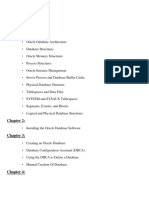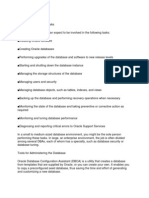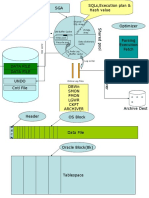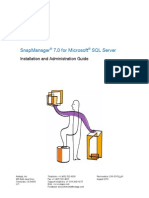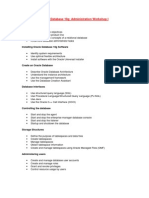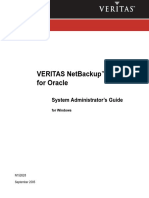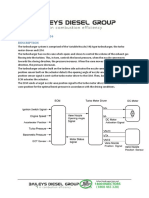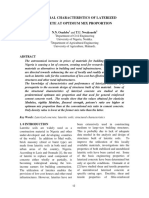0% found this document useful (0 votes)
189 views15 pagesNetApp Snap Manager For Oracle Tutorial
Snap Manager for Oracle simplifies backing up Oracle databases for database administrators by creating efficient and quick backups. It organizes backups into profiles and automates mapping database files to storage. Snap Manager also integrates with Oracle tools like RMAN and ASM, creates snapshot copies of logs, and allows quick cloning of databases. For storage administrators, Snap Manager handles different protocols, optimizes backups based on type, and creates space-efficient clones. The tutorial outlines installing and configuring Snap Manager, creating a repository, profile and taking backups of Oracle databases.
Uploaded by
Rajesh YeletiCopyright
© © All Rights Reserved
We take content rights seriously. If you suspect this is your content, claim it here.
Available Formats
Download as DOCX, PDF, TXT or read online on Scribd
0% found this document useful (0 votes)
189 views15 pagesNetApp Snap Manager For Oracle Tutorial
Snap Manager for Oracle simplifies backing up Oracle databases for database administrators by creating efficient and quick backups. It organizes backups into profiles and automates mapping database files to storage. Snap Manager also integrates with Oracle tools like RMAN and ASM, creates snapshot copies of logs, and allows quick cloning of databases. For storage administrators, Snap Manager handles different protocols, optimizes backups based on type, and creates space-efficient clones. The tutorial outlines installing and configuring Snap Manager, creating a repository, profile and taking backups of Oracle databases.
Uploaded by
Rajesh YeletiCopyright
© © All Rights Reserved
We take content rights seriously. If you suspect this is your content, claim it here.
Available Formats
Download as DOCX, PDF, TXT or read online on Scribd
/ 15








